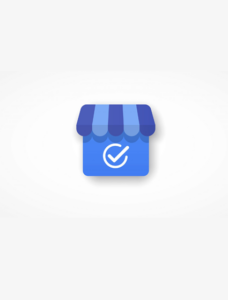
- Red Search
- Resources
- On-Page SEO Checklist
The Ultimate On-Page SEO Checklist 2020
-
 Daniel Law
Daniel Law

On-page SEO remains a critical element when it comes to increasing your website’s ROI. Not only will it help you maximise your resources, but on-page SEO will drive more traffic to your website.
Statistics show that 70 to 80% of searches visit organic results, making them 5.66 times more significant than paid search ads. Besides, search engines transcended from mere Q&A platforms to significant channels to jumpstart your customer journey.
With that, we have brought together the ultimate on-page SEO checklist to optimise your website this 2020.
1. Write Concise Page Titles and H1 Tags
The first thing web crawlers and your target audience see about your page is your page title.
Moreover, title and H1 tags are what search crawlers use to identify your page content, so you need to make it concise but catchy. H1 tags and page titles must also be descriptive and unique, and should also contain primary and LSI keywords relevant to your content.
2. Use Definitive and SEO-friendly URLs
Gone are the days of alphanumeric strings of URLs as descriptive and SEO-friendly URLs took over on-page SEO by storm. With that, avoid using special characters in your URL to keep it short — 5 words should be the maximum.
Don’t forget to include your primary keyword in the URL. It may have a small impact on SERP ranking, but doing so makes it easy for target users and web crawlers to read and remember your page.
3. Craft a Compelling Meta Description
Meta descriptions are small snippets of text that describe your page content for SERPs. It will help your page stand out for readers and give them an idea of what to expect from the page.
So make sure to write a compelling description with keywords while keeping the 928-width pixel limit in mind.
4. Use Subheadings and Header Tags
Reading massive chunks of plain text may drive your readers away. To avoid getting high bounce rates, divide your blog content with subheadings and header tags.
Using header tags will make your content easier to read, and you also have the opportunity to include keywords in them.
Also, subheadings serve as roadmaps for readers and crawlers to find and index information quickly. Just make sure to divide chunks of content into logical and scannable bits that your readers can easily digest.
5. Be Careful of Keyword Placements
Putting your keywords on your page title, URL, meta descriptions, and subheadings are excellent on-page SEO practices. Make sure to include LSI and primary keywords on the first 100 words of your content to maximise your crawl budget, which is the amount of information search crawlers scan on your site.
Additionally, we recommend using your keywords two to three times per hundred words. However, the end goal is to put keywords naturally and seamlessly without stuffing them in every paragraph.
Great on-page SEO tools are available to help you conduct page audits to find the optimal balance.
6. Focus on Providing Great User Experience (UX)
Your website should provide a seamless UX for your visitors. With that, you have to consider these factors:
- Make your content easy to digest
- Remove or fix damaged links
- Optimise content for loading speed
- Keep a responsive design
User experience includes mobile and desktop browsing, so maintain a readable font style, size, and colour and ease of navigation to plummet your bounce rate further.
7. Utilise Internal Link Building in Your Content
Internal links connect your content to another article or page within your site. Using internal links provides a trail for your users to follow and explore your page, increasing dwell time and improving traffic on your site.
Use clear, relevant, and descriptive anchor texts when adding internal links. That way, readers will know where the link will bring them and how it relates to your content.
8. Provide External and Outbound Links
External link building provides links within your content that refer to websites outside your domain. Outbound links help web crawlers understand your content better, so practice linking to relevant websites that have high domain authority (DA).
To note, John Mueller has said that linking out to high authority websites does not help with your rankings, which we agree with.
However, what it does do is provide your users with access to higher-quality information. This is not to say that high authority websites have better content, but generally, this is the case.
9. Place Latent Semantic Indexing (LSI) Keywords
Secondary or LSI keywords are related words/phrases that are semantically related to your primary keyword.
For instance, if you’re selling smartphones on your website, note that Apple and fruit are synonyms, but Apple and smartphone are semantic keywords.
Hence, using LSI terms adds more context to your content, letting Google identify that your content is of high-quality and may rank higher on SERPs.
10. Optimise Images and Alt Tags
Visual content is as vital as plain text. Using images in your content will help readers understand your content better and add aesthetic value to your page. Moreover, images contribute to your overall SERP rankings.
Make sure to optimise image file format and sizes as well as add alt text so crawlers can index your photos accurately.
11. Perform Video Optimisation
Aside from images, you can also embed videos on your page. More than 55% of online shoppers watch a video to aid their buying decision, increasing user engagement and dwell time on your page.
When optimising video content, follow these basic pointers:
- Video title must be concise, engaging, and include primary keywords
- Don’t forget to include LSI keywords on the video description
- Use high-resolution and relevant video thumbnails
- Add closed captions and subtitles for user-friendliness
In a nutshell, using video content on your web content will help viewers better grasp your message.
12. Have a Strong Call-To-Action
When writing SEO blog content, always guide visitors to your primary goal — conversion. You can do so by having a clear and strong call to action. To begin with, it should be relevant to the intent of your content.
For informational pages, consider using related CTAs such as “Sign up now” for an appointment or newsletter subscription.
13. Implement Schema Markup
Schema markups help organise your data structure and help search engines read and rank your page in SERPs. Adding Schema markups will enhance the rich snippets that Google displays beneath your page title.
An example of schema markups is the star ratings beside search results when looking through Google for a nearby hotel or restaurant.
Another is when you find an image attached to the search query on SERPs. When properly implemented, it will then help increase your page’s click-through rate (CTR).
14. Make Sure Your Page is Crawlable and Indexable
Web crawlers scour, evaluate, and rank billions of online content to determine which one has the highest chance of answering a search query.
Search bots also explore several websites and links within a page to discover new URLs and ultimately find the content they can index.
That said, you also have specific pages that you don’t need in SERPs, such as privacy policy pages and whatnot. You can block crawlers from that page using robots.txt, or use Google Search Console or Screaming Frog to determine pages that have “noindex” tags.
15. Target and Track Relevant Keywords
Ranking in SERPs means using keywords that users type in when browsing for content. Therefore, conducting comprehensive keyword research is critical for on-page SEO, as it will help you know your audience more and take advantage of their search behaviour.
To start your keyword research, you can use Google Keyword Planner, SEMrush, and similar keyword analytics tools.
The main point is that you should be able to find an ideal keyword or long-tail keywords that your target audience uses when searching.
17. Avoid Cannibalising Keywords
Having two or more pages that target the same keywords is called keyword cannibalisation. It is a common mistake that you should avoid with on-page SEO, as it confuses web crawlers in finding which page is more important.
Besides, using keyword maps will guide you in assigning unique keywords to your content so that search crawlers can scour your page’s relevancy on a user’s search.
18. Satisfy Search Intent
For on-page SEO, you can break down search intent into four categories:
- Informational — How to’s, lifehacks, tutorials, and ultimate guides
- Transactional — Decided buyers looking for a purchase
- Comparison — Weighing different products under various options
- Navigational — Searching a particular website or a specific service
Regardless of your content, make sure that it satisfies your visitor’s search intent. If a user searches for product comparisons, your content should not lead them toward making a sale.
19. Optimise for Voice Search
Our latest SEO statistics show that 62% of people have bought something online through voice search. That sheer potential will remain untapped if you don’t optimise voice search, which you can do so by:
- Using structured data — Enable search enhancements to achieve a voice search-friendly result on SERPs
- Signing up for Google My Business — Share your business information on your web footer in plain text format.
- Be mobile-friendly — Mobile search accounts for most voice searches, so it’s a no-brainer to prioritise a mobile-friendly and responsive website.20. Use Keyword and Title Modifiers
Modifiers extend your keywords and form long-tail keywords, which help rank for other variations aside from your primary keyword.
Title modifiers also make your page title readable and voice search-friendly, thus driving more organic traffic to your website.
20. Craft a Convincing Introduction
If you lose your readers right off the bat, you’ve lost them for good. That said, write an introduction that will pique the readers’ interest to leverage user engagement.
To prevent your visitors from “pogo-sticking” from one page to another, hook them with an irresistible introduction that will make them keep reading the entire article.
Besides, no matter how good your content is, your readers won’t see it if they’re already gone in the first paragraph.
21. Optimise Content for Featured Snippets
Search engines usually pull high-quality content from top 5 ranking websites into featured snippets, which are organic answer boxes you can find on SERPs.
Having your content as a featured snippet further increases organic traffic to your site, as people will find them reliable and trustworthy.
To optimise for featured snippets, take note of the following:
- Provide a concise and accurate answer to questions
- Use statistics and facts when answering queries
- Make sure your content answers as many related questions as possible
- Phrase your questions properly
- Use multimedia and infographics to support your claim
- Implement link building and optimise your content for mobile
22. Write High-Quality Long-Form Content
Relevant long-form content with as much as 3000 words is more likely to generate traffic, social shares, and backlinks than short articles.
Ideally, writing a 1000-word post with bullets and subheadings should attract more backlinks and increase your authority and ranking.
You need to maintain original and high-quality content in all aspects, as it can make or break your SEO strategy.
Also, if you aim for the long-term, focus on information that will stay relevant over time. That way, your content won’t get outdated quickly, and you won’t have to create new content as much.
23. Include Social Sharing Buttons
Aside from call-to-actions that seal the deal, you can also leverage social channels by having social sharing buttons on top of your content. Besides, people share compelling content online, so make sure to take advantage of it and improve your reach across multiple platforms.
Furthermore, social media sharing enhances customer experience and signals search engines that you have insightful content.
24. Optimise Page Loading Speed
Inarguably, no one wants to visit a slow website.
If your page loads for more than three seconds, you run the risk of losing potential clients along the way. That said, loading speed is a known ranking factor among search engines, so don’t forget to optimise your site for speed.
Plug your site into Google PageSpeed Insights to check your page load speed and determine what impacts your website’s overall performance.
25. Responsive Layout and Mobile-First Indexing
With Google rolling out mobile-first indexing, it will likely use your website’s mobile version to index and rank your page. That means optimising every corner to be responsive on mobile devices is critical for on-page SEO and ultimately ranking in SERPs.
Moreover, adopting a responsive design will allow your layout to adjust seamlessly depending on your visitor’s device.
Summary
Following our ultimate guide for on-page SEO should help you optimise every aspect of your website for 2020. However, securing your spot within the top 10 is one thing, and retaining it is another.
We provide bespoke SEO services that can help your brand craft a data and performance-driven SEO strategy to secure and maintain your spot within the first page of SERPs.
For any questions and inquiries, call our SEO experts at 1300 101 712 or drop your message in our contact form.
Written by





